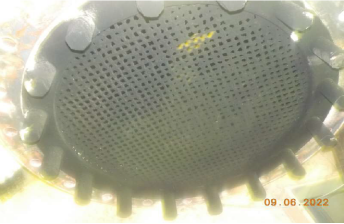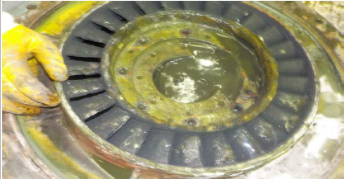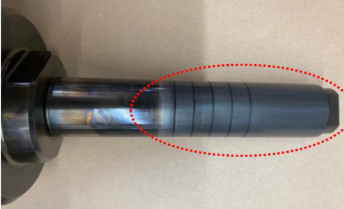Maritec has tested several VLSFOs delivered in the ARA region to be observed with the presence of chemical contaminants in the recent months. These VLSFOs also indicated elevated potassium content and acid number.
From these samples, CTI-Maritec has obtained feedback from vessels encountering rapid and excessive wear on fuel pumps on main propulsion engines and a tendency for increased deposit formation in the exhaust system.

Forensic analysis by Gas Chromatography and Mass Spectrometry techniques, specifically ASTM D7845 GC/MS and Solid Phase Extraction (SPE) GC/MS, on some of the samples revealed the presence of the following compound groups at abnormally high concentrations
· Fatty Acids and Monoglycerides (>1000ppm)
· Alkylresorcinols (>2000ppm)
· Phenolic compounds (>1000ppm)
Fatty acids and Monoglycerides are acidic compounds commonly found in fuels where the FAME content has broken down in the presence of water and have known to cause costly accelerated wear in fuel oil injection pumps. The presence of these compounds can also suggest an inclusion of substandard Bio-fuels into the blend. This also explains the high potassium content in the fuel as Potassium Hydroxide (KOH) is one of the possible catalysts used in the production of bio-diesel. The separation of the spent catalyst out from the final product is a complicated and expensive process. The increased potassium can also contribute towards the total ash forming tendency of the fuel leading to abnormal deposit formation in post combustion exhaust system components.
The presence of
Alkylresorcinols and phenolic compounds suggests the inclusion of shale oil which is allowed as per the definition of ‘petroleum fuel’ in ISO 8217 standards. CTI-Maritec’s experience however has shown that the presence of these compounds tends to cause fuel instability leading to issues like filter blockages and purifier bowl overloading. This is despite the Total Sediment potential tests being within specification. Any sludge not capable of being removed by the fuel treatment system can cause combustion issues in the main engine.
If your vessel is expected to bunker in the ARA region; CTI Maritec advises to check the pre-bunkering certificate of quality or Manifold sample test results for signs of abnormally high potassium content (>110ppm) and/or high total acid number (>1.5mgkoh/g) and pre-emptively analyze the bunker fuels by Gas Chromatography and Mass Spectrometry (GC-MS) that can reveal the presence of undesirable compounds in the fuel thus safeguarding vessel operations.
In every case, CTI Maritec urges bunker fuel receivers to ensure thorough attention is given to the witnessing of correct sampling procedures during bunkering, counter-sealing and recording of seals in the bunker delivery note and any other documentation required to ensure correct representative samples are obtained during the bunkering process.
Collecting objective evidence on the storage, treatment and usage of the fuel is to be always given a high priority in the event an operational problem occurs to determine if the fuel used was one of the root causes for a machinery failure.
This document however does not reflect on the overall quality of fuel being supplied at ARA region.
The opinions expressed herein are the author's and not necessarily those of The Xinde Marine News.
Please Contact Us at:
media@xindemarine.com




 Ningbo Containerized Freight Index Weekly Commentar
Ningbo Containerized Freight Index Weekly Commentar  Ningbo Containerized Freight Index Weekly Commentar
Ningbo Containerized Freight Index Weekly Commentar  Ningbo Containerized Freight Index Weekly Commentar
Ningbo Containerized Freight Index Weekly Commentar  BIMCO Shipping Number of the Week: Bulker newbuildi
BIMCO Shipping Number of the Week: Bulker newbuildi  Ningbo Containerized Freight Index Weekly Commentar
Ningbo Containerized Freight Index Weekly Commentar  Ningbo Containerized Freight Index Weekly Commentar
Ningbo Containerized Freight Index Weekly Commentar